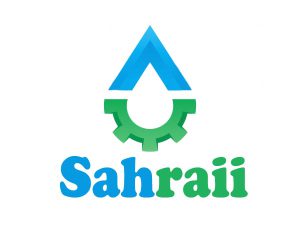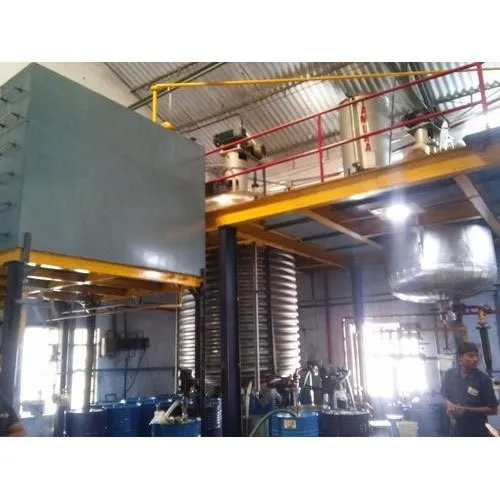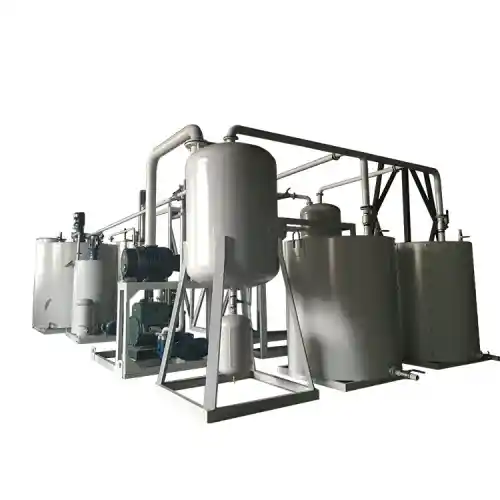Lube Oil Blending Plant Manufacturers Are Ready For Designing Any Kind Of Oil Related Plant And Machines In Worldwide.
Designing and Manufacturing all kinds of oil blending plant and machines By Most Professional Enginners And Competitive Price.
Also We Are Manufacture Of Mini Oil Refinery , Used Oil Recycling Plant , Grease Manufacturing Plant .
What is Oil Blender

A Lube Oil blender is a machine or device that heats raw materials and performs the stirring action at the same time.
This device is used in various industries to stir raw materials and concentrate liquids.
Blenders with a capacity of 3 to 30 tons are usually used.
Blending factories for motor oil and industrial oils are based on the operation of this machine.
The mixer or blender device looks simple, but it has a special structure and engineering so that the device does not vibrate and does not cause any problems in the mixing process.
For Lube Oil Blending Plant Price Just Contact Us
Types Of Oil
Motor oil, motor oil or motor lubricant are any of different types that include basic oils with various additives, especially anti-wear additives, in addition to detergents, dispersants, and for multi-grade oils, it improves the viscosity index.
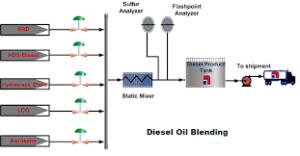
Engine oil is used to lubricate internal combustion engines. The main function of engine oil is to reduce friction and wear in moving parts and clean the engine from sludge (one of the functions of dispersion) and varnish (detergent). It also neutralizes acids from fuel and oil oxidation (detergents), improves the sealing of piston rings, and cools the engine by carrying heat away from moving parts.
In addition to the basic ingredients mentioned above, almost all lubricating oils contain corrosion and oxidation inhibitors. Engine oil may consist of a lubricant base only in the case of detergent-free oil, or of a lubricant base base with additives to improve the oil’s detergency, extreme pressure performance, and ability to prevent corrosion of engine components.
Today’s motor oils are blended using base oils consisting of petroleum hydrocarbons, polyolefins (PAO) or their blends in various proportions, sometimes with 20% by weight of esters for better dissolution of additives.

Lube Oil Blending Plant For Sale Just contact us
Oil Mixing Process
Oil mixing and additive mixing is a fully automatic process, which is carried out in several parallel lines, each of which contains an additive weighting and mixing tank and mixer.
Each batch can be controlled remotely from the operator station using PLC and SCADA.
The main sources of the compounding process are base oil base blends. The combination method follows the formula set for each product. In order to achieve the required properties, additives are mixed according to the exact weight prescription.
The combination of oil, oil, base oil stock and additives is done in special mixers.
The final included oil is transferred to special storage tanks and from there it is transferred to barrels, cans and filling bottles.
Various technologies and methods are used for blending or recycling burnt oil. Burnt oil recycling industries use different technology and equipment installation in order to produce a suitable product that helps to preserve the environment.
Recycling of burnt oils is difficult and complicated due to the presence of various types of pollution and solid and gas particles in it. Burnt industrial oil cannot be easily removed due to its high pollutability and quickly pollutes other solvents.
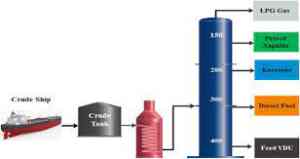
Having this characteristic of absorbing pollution has caused special sensitivities on the part of environmentalists regarding the non-entry of burnt oil into the environment. The best option is to recycle these oils for reuse. Below we take a look at this type of recycling and its different methods.
Sources from which burnt oil is produced
Different industries such as shipping, aviation, automobile, etc. produce different types of burnt oils, which we briefly describe the production of these burnt oils on their behalf:
industry sector
Burnt industrial oils include gas engine oil, turbine oil, compressor oil, heat transfer oil, metalworking oil and hydraulic oil.
Burnt oils from factories are a mixture of industrial lubricants and grease mixed with other oils. These industrial burnt oils contain materials such as metal particles, dust and oxidation products.
Marine sector
All types of ocean-going ships and other marine transportation equipment consume a large amount of industrial lubricants and grease.
These appliances are equipped with tanks for collecting used grease, burnt oil, and diesel engine oil discharged during operation.
These tanks are emptied in ports and even large amounts of it may leak in worn out and damaged ships.
Intentional or accidental leakage of these burnt oils from pipelines and tankers is one of the most important causes of oil pollution in the marine environment, which is very dangerous.
Automotive sector
Burnt oils in this sector are produced in oil changers, various car sales centers and garages and other service areas and car fleets. These burnt oils include transmission oil, hydraulic oil, gear oil, engine oil, as well as small amounts of solvents.
Burnt car oil contains toxic substances and is dangerous and flammable. A large amount of this type of oil is obtained from the transportation of construction companies and heavy vehicles.
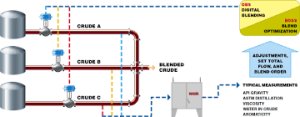
power department
Transmission companies use a small number of extremely large transfer motors. But distribution companies use a small number of small transformers to distribute electricity around the world. Industrial oil is an internal coolant of these transformers, which is also a protector and insulator against sparking.
Oils are tested at certain intervals to see if they have maintained their basic electrical properties or not, otherwise they should be changed quickly to ensure better operation of the device.
Types of methods used to recycle and refine burnt oil
- Recycling through vacuum distillation towers using acid solvent and mineral soil
- Recycling and purification using mineral soil, acids or bases
- Recycling and purification with the help of acid activated soil
- Recycling and purification process using propane solvent
- Burnt oil purification process using hydrogenation
- Recovery and purification of burnt oil with the help of thin film
- vacuum distillation towers
Recovery and purification of burnt oil with the help of ultrafiltration - Processes of recycling or blending burnt oil
In order to carry out special processes of recycling burnt oil, the above-mentioned industrial oil purification methods are used. In summary, the recycling steps include the following:
- Removal of solid particles and water particles by sedimentation in burnt oil
- Using the reaction of sulfuric acid to remove all kinds of impregnated materials soluble in acid, removing grease and gum
- Using alkaline reactions to neutralize the acidic environment used in the recycling process
- Using solvent liquids to remove soap
- Simple distillation to remove volatile oils and moisture
- Extraction using special solvents and distillation under vacuum
- Using special soil for dyeing and absorbing all kinds of impurities
- Using filtering to remove mineral additives and other solids inside
- Hydrogenation to improve oil color and landing in order to achieve industrial oil standards and expected properties
